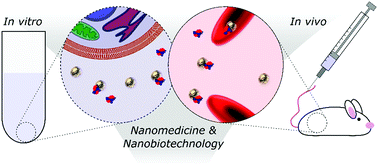Nanoparticle–proteome in vitro and in vivo†
Abstract
The protein corona is a concept central to a range of disciplines exploiting the bio–nano interface. As the literature continues to expand in this field, it is essential to condense and contextualize the in vitro and in vivo proteome databases accumulated over the past decade: a goal which this review intends to achieve for the benefit of nanomedicine and nanobiotechnology. The parameters used for our review are the physicochemical characteristics of the nanoparticles, their surface ligands, the biological matrix from which a corona was formed, methods employed, plus the top-ten enriched corona proteins. In addition, the protein coronal networks and their implications in vivo are highlighted for selected studies.

- This article is part of the themed collection: Recent Review Articles


 Please wait while we load your content...
Please wait while we load your content...